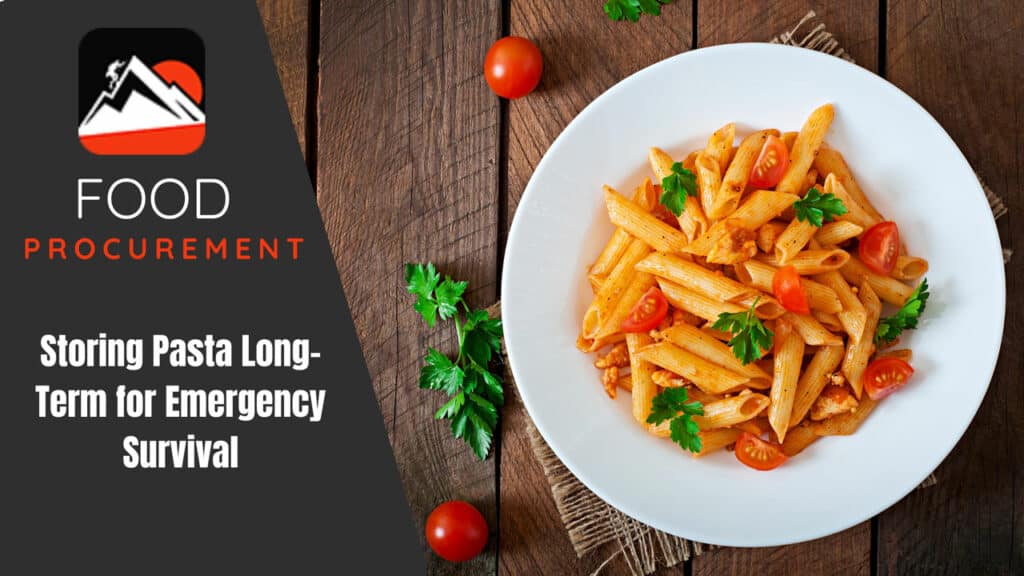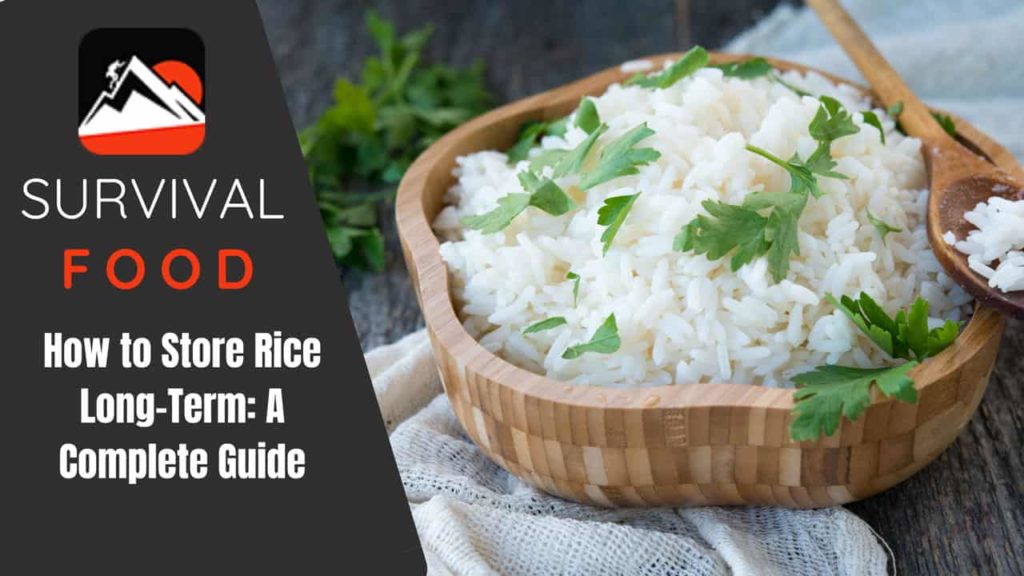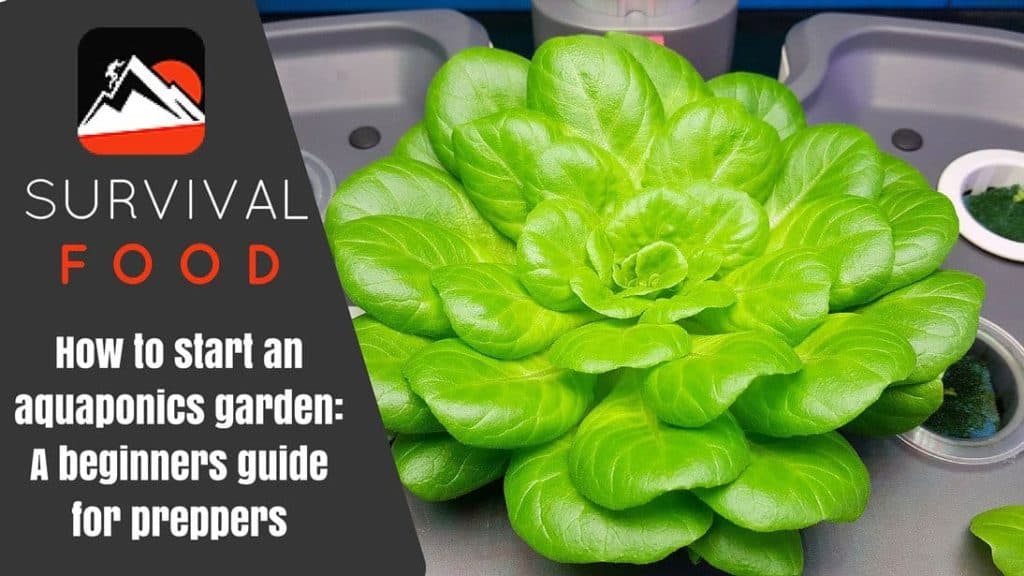Contents
When most people think about survival food, they think about things like canned goods and dried beans. But what about pasta?
Pasta is one of the most versatile and nutrient-rich foods out there, making it an ideal choice for your survival pantry. For starters, pasta is packed with carbohydrates, which are essential for energy.
It also contains a good amount of protein and a variety of vitamins and minerals. Plus, pasta is extremely affordable and has a long shelf life. And because it can be quickly cooked in just a few minutes, pasta is perfect for those moments when you need a quick meal but don’t have time to prepare something more elaborate.
So if you’re looking to stock your pantry with survival food, don’t forget to add some pasta to the mix.
How Long Does Stored Pasta Last?
We’ve all had that moment where we reach into the pantry for a box of pasta only to find that it’s been there for who knows how long. And while most of us probably shrug our shoulders and toss it out, you might be surprised to learn that dry pasta can last for 20 to 30 years if stored properly.
If it is stored in the original box, you can expect it to last about 2 or 3 years after the expiration date.
Of course, the longer it’s stored, the more its quality will diminish, so it’s best to eat it sooner rather than later. But if you find yourself with a surplus of pasta, the best way to keep it fresh is to store it in an airtight container in a cool, dry place. Then, with proper care, your pasta will be there when you need it – even if that day is 20 years down the road.
Also check our article about storing powdered milk long-term the right way.
Factors That determine How Long pasta Will Last
How long pasta will last depends on a few different factors.
- First, the type of pasta matters. For example, whole-wheat pasta will last longer than white pasta because whole wheat contains more nutrients and fiber.
- Second, moisture levels play a role in how long pasta will last. Pasta that is too dry will become brittle and break easily, while pasta that is too wet will become mushy.
- Third, pasta can become rancid when exposed to air, so keeping it in an airtight container is crucial.
- Fourth, pasta absorbs odors from other food, so storing it away from strong-smelling foods is best.
- Finally, bugs are attracted to pasta, so it is important to keep it in a sealed container. By taking these factors into account, you can determine how long your pasta will last.
Different Shelf Life for Types of Pasta
- Egg Pasta: The shelf life for egg pasta is about two years. However, after that time, the pasta may start to discolor and lose some of its nutrients. Additionally, egg pasta can absorb odors from the environment, so it’s best to store it in an airtight container.
- Semolina Pasta: Just like any other pasta, semolina pasta has a shelf life. The good news is that it lasts for quite a while – at least two years in the pantry. If you store it in a cool, dry place, it could last a lot longer than if you store it in a warm, humid environment. Additionally, if you keep it tightly sealed in its original packaging, it will also last longer.
- Whole Grain Pasta: The shelf life for whole-grain pasta is one to two years. However, natural oils can cause it to gradually go rancid. Therefore, eating after one or two years is safe, but it might not taste very good.
- Vegetable Pasta: It has a shelf life of two years. After that, the vegetable flavors will start to fade, and the pasta may discolor. However, it is still safe to eat. The nutritional value will decrease over time, but the pasta will still be a good source of carbohydrates.
- Gluten-Free Pasta: When stored properly in a cool, dry place, gluten-free pasta will last for two years. Some brands have natural oils, which will make the pasta go bad quicker, especially in a warm or hot environment.
Best Pasta for Long-Term Storage
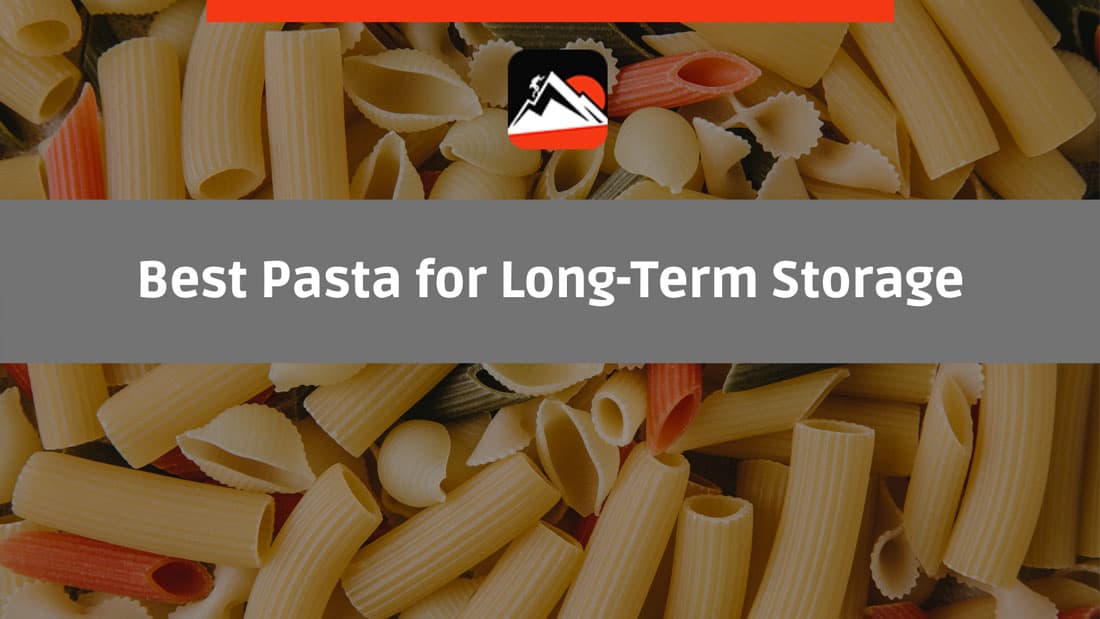
In terms of pasta, there are a few key things you want to look for when picking something that will last a while in storage.
- First, you’ll want something that is moisture-free. This will help it to last longer and not get moldy or mushy.
- Second, you’ll want something that cooks quickly. This is important because, in an emergency situation, you may not have access to a lot of resources or time.
- Third, you’ll want something high in calories and carbs. This is for energy – if you’re in a survival situation, you’ll need all the energy you can get!
- Fourth, you’ll want something inexpensive.
Pasta is an excellent option because it meets all of these criteria – and it’s also really versatile. In addition, you can add many other pantry ingredients to make a healthy meal. So if you’re looking for long-term food storage options, pasta should be at the top of your list!
We also recommend learning the proper way to store pancake mix in your emergency food pantry.
Best Long-Term Storage Containers for Pasta
Mylar Bags
If you love pasta, you know it’s important to store it properly so it doesn’t go bad. And one of the best ways to do this is by using mylar bags.
Pros
- Mylar bags are made of a material that is impermeable to oxygen and moisture, which means that your pasta will stay fresher for longer when stored in them.
- Plus, they’re resealable, so you can open and close them as often as you need to without worry.
- And if you’re looking to save some space, you can even vacuum-seal your mylar bagged pasta!
Cons
- First, mylar bags can be difficult to seal tightly, resulting in the pasta becoming stale or even moldy.
- Additionally, mylar bags can be punctured easily, allowing water or other contaminants to come into contact with the pasta.
- Finally, mylar is not a biodegradable material, so it’s not the most environmentally friendly option for storing pasta.
Storing oats is also a great idea for emergencies, learn how to do it here.
Food-Grade Storage Containers
When dealing with food storage, it’s essential to ensure that your containers are food-grade. That means they meet the standards set by the FDA for materials that come into contact with food.
Pros
- These containers are made of high-quality materials that won’t leach chemicals into your food.
- They’re designed to keep food fresh for longer.
- Plus, they come in a variety of sizes to fit any need.
Cons
- These containers are often more expensive than their non-food-grade counterparts.
- They can be more challenging to find, as all retailers do not carry them.
- Finally, food-grade storage containers may not be necessary for all types of food storage.
Mason Jars
Mason jars are a popular choice for food storage, and there are good reasons for that.
Pros
- They’re affordable and easy to find.
- They can be used for canning or freezing foods.
- Mason jars also have a tight seal that keeps out moisture and air, which helps to keep food fresh.
Cons
- First of all, they’re not necessarily the best choice for storing liquids since they can leak if not sealed properly.
- Also, the glass can break if it’s dropped or subjected to sudden temperature changes.
Vacuum Sealing
Vacuum sealing is a popular food storage method with pros and cons.
Pros
- Vacuum sealing can extend the shelf life of foods by protecting them from oxygen and moisture. This is ideal for storing perishable items like meat and produce.
- Additionally, vacuum-sealed foods take up less space, which can be helpful if you’re limited in storage space.
Cons
- Vacuum sealing can be expensive, and it requires special equipment.
- Additionally, some foods, like fresh fruits and vegetables, don’t respond well to being vacuum sealed and can spoil faster.
Additional Long-Term Storage Tips For Pasta
In addition to the tips already mentioned, there are a few other things you can do to extend the shelf life of your pasta.
- Oxygen absorbers are small packets that remove the oxygen from the air, creating an environment that is unfriendly to bacteria. Adding a few oxygen absorbers to your storage container can help keep your pasta fresh for longer.
- It’s also important to store your pasta in a dry and cool place. Excess moisture can cause the pasta to spoil, so keep it in a dark cupboard or pantry away from any heat sources.
- Another good idea is to correctly tag your stored pasta with the expiration date. This will help you keep track of when it needs to be used up.
- Finally, don’t forget to rotate your pasta supplies. Like with any other food, it’s essential to use the oldest packages first and work your way through.
By following these simple tips, you can enjoy fresh pasta for months (or even years) to come.
Flour is a versatile food item that should be part of your preps. Learn how to properly store it long-term here.
What Can Spoil Pasta When Stored Long-Term
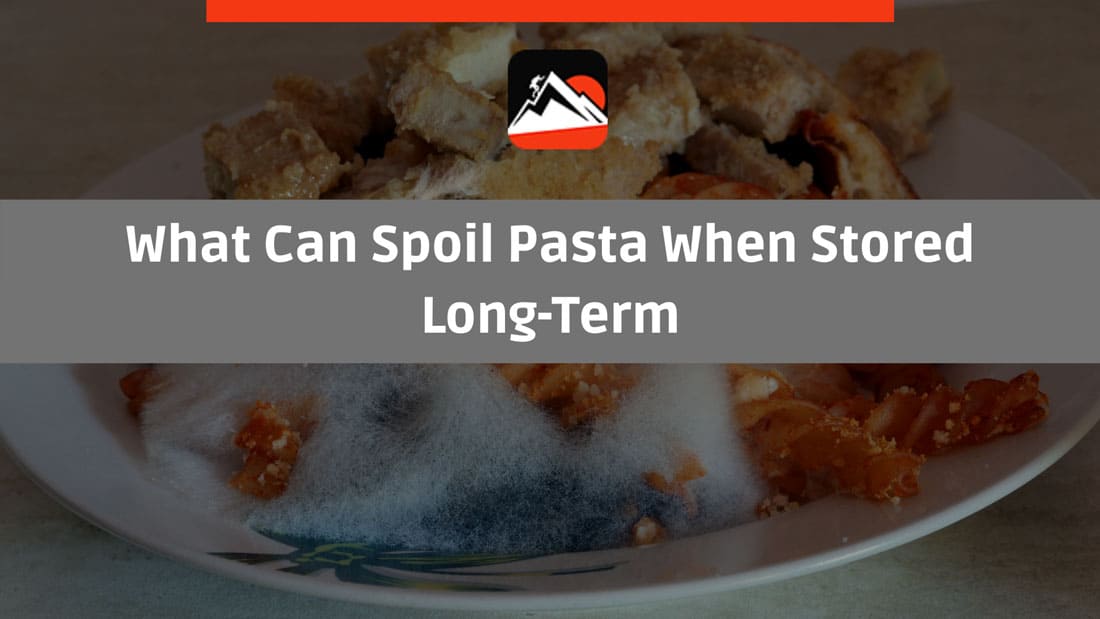
Anyone who’s ever cooked pasta knows that it doesn’t take long to go bad. But what exactly causes pasta to spoil? And more importantly, how can you prevent it? There are four main things that can cause pasta to go bad: oxygen, moisture, absorbing odors, and pests.
- First, oxygen is the enemy of pasta. When exposed to air, pasta will start to turn brown and harden. This process is called oxidation, which causes cut apples to turn brown. To prevent oxygen from spoiling your pasta, store it in an airtight container.
- Moisture is also harmful to pasta because it encourages mold and bacteria growth. That’s why it’s important to store pasta in a dry place. If your pantry is prone to moisture, you can keep your pasta in a sealed plastic bag or container.
- Pasta can also absorb odors from other food, which gives it a bad taste. To prevent this, you should store your pasta in a clean, dry place away from strong-smelling foods like garlic or onions.
- Pests like rodents and bugs love nothing more than a nice plate of spaghetti. So store your pasta in a sealed container or bag to keep them out. If you live in an area with many pests, you may even want to put your pasta in the freezer.
- Finally, temperature can also affect the quality of pasta when stored long term. Optimal storage conditions for pasta are cool and dry, so a pantry or cupboard away from any heat sources is ideal.
Signs That Your Pasta Has Gone Bad
Do you have a box of pasta in your pantry that’s been sitting there for a while? Or maybe you found an old package at the back of the cupboard. Before you cook it up, it’s important to make sure that the pasta is still good to eat.
Here are a few signs to look for:
- Discoloration is one of the first things to watch out for. If the pasta has changed color from its original whitish hue, it’s probably time to throw it out. The same goes for any pasta that has developed a greenish tint.
- Pasta can also go bad if it starts to smell funny. If it has a sour or musty smell, it’s best not to risk it.
- Another sign of bad pasta is an unusual texture. For example, if the pasta is sticky or mushy, it’s probably not safe to eat.
If you’re ever in doubt, it’s always better to err on the side of caution and toss the pasta. After all, there’s no point in eating something that might make you sick.
Storing Dry Pasta Vs. Storing the Ingredients
Storing the ingredients to make pasta vs. storing dry pasta is a debate as old as time. Okay, maybe not that old, but it’s still a hot topic.
There are pros and cons to both options.
- Storing the ingredients to make pasta is usually cheaper than buying dry pasta.
- You also have complete control over what goes into your pasta- no preservatives or unwanted additives.
- Making pasta from scratch also generally cooks faster than dry pasta, so you’ll also save on fuel costs.
- On the other hand, making pasta from scratch takes effort. You need to measure the ingredients, mix them, and then shape and cook the pasta- all steps that can be easily skipped when you buy dry pasta.
- You also need to know how to make basic pasta dough, which may not be something everyone is familiar with.
Ultimately, it’s up to you to decide whether the convenience of dry pasta or the cost savings and control of making it from scratch is more important to you.
Rice is affordable and full of calories, it’s a staple in any emergency food pantry. Check our guide to store it the right way here.
Some Uses for Your Stored Pasta
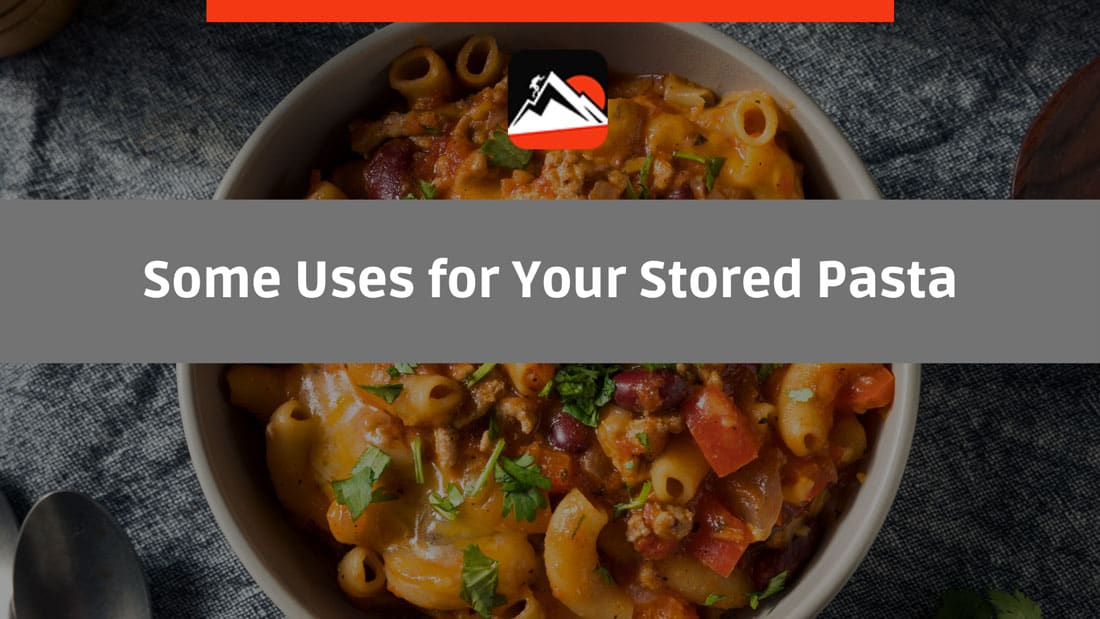
Let’s face it, we all have those days when we don’t feel like cooking. You open up the pantry and see a box of pasta that’s been sitting there for months, and you think to yourself, “I could really go for some spaghetti right now.” But then you remember that you don’t have any sauce and you’re feeling too lazy to go to the store. Or maybe you’ve got a bunch of leftovers in the fridge that you need to use up before they go bad. Whatever the case, there are plenty of delicious dishes you can make with stored pasta.
- Casseroles are always a good option, and they’re especially easy if you’ve got some leftover meat that needs to be used up.
- Soups are another great way to use up stored pasta; they can be hearty enough to serve as a meal on their own.
- Salads are also a good choice; they’ll be even tastier if you add some of your favorite vegetables.
- Pasta with Veggies is a fantastic dish too! You can cook up some pasta with whatever veggies you have on hand.
There’s no need to be fancy – sometimes the simplest dishes are the best. So next time you’re looking for something to make for dinner, don’t forget about your stored pasta. With a little creativity, it can be the star of the show.
Conclusion
If you’re the type who likes to be prepared for anything, then you know that stocking up on non-perishable food items is a must.
And one of the best things to have on hand is pasta. Not only is it cheap and easy to find, but it can also last for years when stored properly. And if the unthinkable happens and you find yourself in a survival situation, pasta can be a real lifesaver. It’s filling and satisfying and can be cooked in many different ways.
So next time you’re at the store, pick up an extra box (or two) of pasta and tuck it away in your pantry. You’ll be glad you did if the SHTF.

